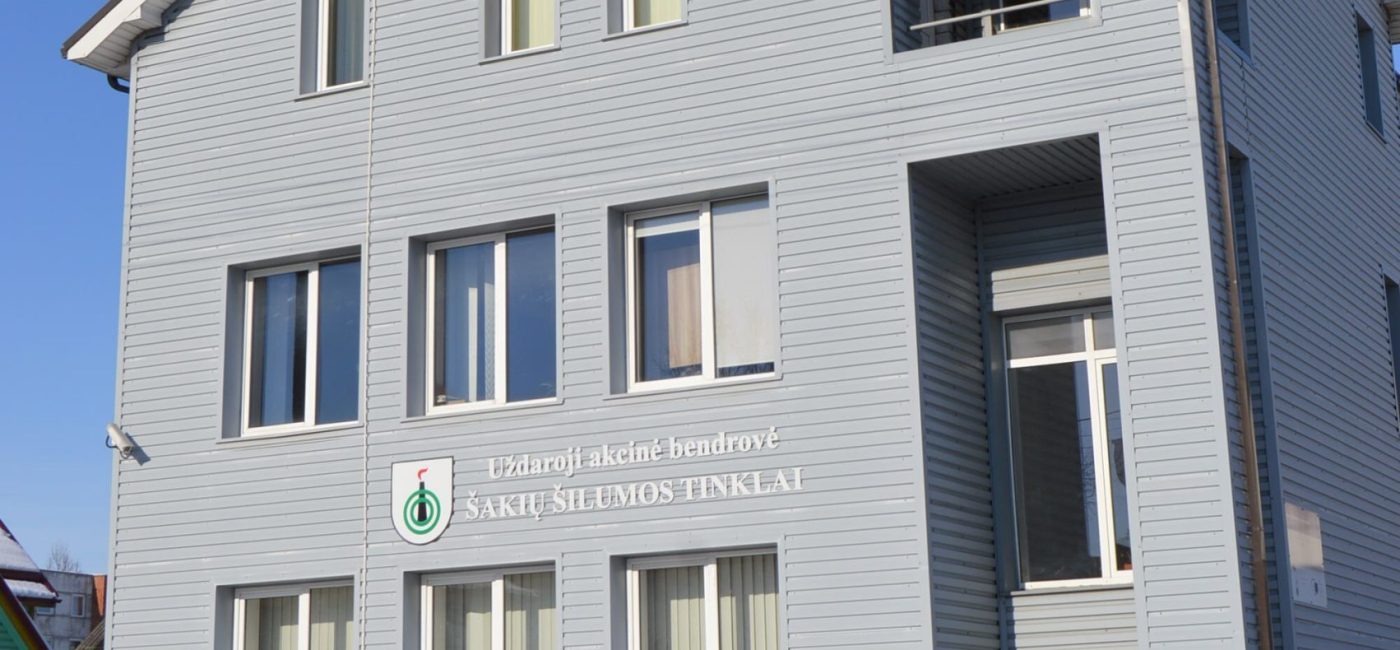Observability and state estimation of District heating network is performed in real time by Digital Twin solution. Results are monitored by Utility operator in real-time on operators computer screen. Indicators such as environmental temperature, heat consumption and production are forecasted, heat supply flow temperature is calculated, and changes over the time are monitored. This system allows the company’s personnel to quickly evaluate the cause of a failure and take remedial action, or try to prevent a potential failure before it happens, without having to wait for consumer complaints.
Most importantly, the continuous flow of information allows the company to control its network and the heat supply temperature with a high degree of efficiency, making the necessary adjustments at times when the city’s demands for heat and hot water are low. This helps the company save money.

“When I took the helm of the company a few years back, we did not have any of this. A large portion of data about the network and its operations was missing, while other information was only available on paper. Therefore, we couldn’t always say with any kind of accuracy what the network looked like and how it was installed. Instead, someone would trace a finger across the city plan, saying that this is where our pipes lie,” remembered Raimondas Rauckis, CEO of Šakių Šilumos Tinklai (District Heating company of Šakiai City, Lithuania).
Real-time data and decisions
Šakiai is a small, quiet town with a population of around 5,000 located in the south-west of Lithuania. Until recently, the town was famous for its lovely nature, cultural scene and the manors scattered throughout its suburbs. However, since 2019, Šakiai has been regarded as a pioneer of technological advancement in Lithuania, with the company that supplies the town’s heat and hot water kicking off a project to deploy a digital twin of its heating network – the first of its kind in the country.
The company’s CEO explained that this project was driven first of all by the need for information, with a necessity to transpose the layout of the town’s heating network onto digital media. However, consultations with specialists in digital solutions for manufacturing and industrial companies led to a broadening of the scope of the work.
The implementation of the project led to the development of a digital heating network model, with the digitalisation of the key heating systems created by designing a so-called digital twin network. This solution allows for real-time monitor, analysis and advance control of the system’s performance, with the ability to adjust exchanges of water and heat within the network.
“The network did not have any smart metering system for consumers, and we were faced with the conundrum of having to choose between starting to work on consumers smart metering or deploying a digital twin network right away, then addressing any challenges as they arose. We decided to go for the best outcome within the shortest timeframe possible, so we chose option number two. Some of our solutions allowed us to achieve impressive results right off the bat: after our contractor, Energy Advice, implemented the functionality allowing us to predict hourly energy consumption levels based on monthly data declared by the consumers, the prediction error fell to below 5%,” said Mr Rauckis.
Smart Metering systems installed at the most remote locations within the network helped us to increase digital twin precision also assess heat flow parameters supplied from the boiler, as well as its quality when it reaches the remotest points. This means that our specialists using digital twin are able effectively control the work of the boiler, while taking measures to recover from failures or reduce heat losses.
These new solutions then paved the road for future developments, as the deployment of the digital twin revealed that some of the heating network’s potential remained untapped. A decision was made to install smart metering equipment at Client side with the lowest reserves of pipe capacity. In addition, digital twin are being deployed to optimise hourly operation and reduce supply heat flow operation temperature.
The digital twin makes it possible to easily evaluate the possibility to connect new network users and to prepare the technical conditions for renovating the heating units. Šakių Šilumos Tinklai will continue to deploy digital solutions and has plans to install a remote metering system for all consumers by 2027, in order to be able to digitally monitor and control the town’s entire heating system in real time using digital twin.

Win-win scenario for the company and consumers
The company’s CEO revealed that the digitalisation of the network went quickly and smoothly, with no interruptions to the ordinary operations of the heating system. The company started reaping the benefits provided by the digital twin in less than three months. Data from the geographical information system (GIS) was digitalised and a heat energy forecast function was implemented, as a result, thermal-hydraulic calculations are performed and the target heat flow temperatures are delivered to the boiler operator in real time. The heating network has switched from the operating mode of a third-generation heating network to that of a fourth-generation network.
Nonetheless, there were some challenges in the run-up and during the implementation of the project, although they had to do with people rather than technology.
“It wasn’t easy for us to find the resolve to be innovation pioneers. We had to move past a few outdated stereotypes. I myself had mixed feelings when I received the offer to start the network digitalisation. On the one hand, I was excited about the possibility to create a digital copy of the network. It was necessary to be able to work efficiently and smoothly, while the company needed to receive and store accurate information. But on the other hand, I had doubts about the digital solution. I was concerned about whether our people had enough knowledge and the competencies to be able to utilise every aspect of the system,” said Mr Rauckis.
The CEO revealed that convincing the team to take the plunge and accept innovation was a difficult task. “Most likely, every organisation is faced with some pushback when it comes to innovation. People are afraid they will lose their jobs to technology, or that they will be subjected to extra controls. Nonetheless, our team soon realised that those fears were unjustified. They recognised that the solutions being deployed would provide a win-win situation for them, for the company and for the consumers of heat,” said Mr Rauckis.
The nearly 2 thousand consumers that the company provides its services to are now experiencing the benefits of the system. These include added comfort and a better service quality, because the network operators are now able to spot failures and take preventive actions or eliminate any hiccups without delay.
Call to be open to innovation
Energy Advice, the company that carried out the Šakiai heating network digitalisation project with innovative solution EA-SAS Heating, helps companies to collect, analyse and, most importantly, use data to boost their operating and energy efficiency.

“Every organisation has a lot of data generated by every action and process, ranging from information about its raw materials and energy consumption to its financial flows. However, there are relatively few heating networks that employ modern automated solutions to collect, analyse and apply that data for the purpose of improving their operations,” observed Dr Vytautas Šiožinys, CEO of Energy Advice.
He explained that the Šakių Šilumos Tinklai digitalisation project was unique in terms of using digital twin solutions for the first time, to submit real-time tasks in the Supervisory Control and Data Acquisition (SCADA) system. The benefits of the project went well beyond improving the KPIs of the company’s networks. Šakių Šilumos Tinklai set an example that has inspired many other Lithuanian heating companies to take a closer look at the possibilities of digitalisation and implementing their own cutting-edge solutions.
According to Mr Šiožinys, digitalisation is the next level of automation in which all the data that the organisation has available is employed. Digital solutions can be used to combine information and hardware across the different systems of a company, and to supply information to a shared data lake. For instance, in the case of Šakių Šilumos Tinklai, it involved the EA-SAS Heating digital twin that was customised and deployed in a cloud, where it delivers control tasks to the existing SCADA systems.
Impressive results were achieved at Šakių Šilumos Tinklai by designing and developing EA-SAS Heating two-pipe thermal-hydraulic network calculation algorithms. These algorithms work on the basis of thermal-hydraulic calculations and measurement results. Thus, the ongoing calculations mirror the measurement results for every hour of operations with a margin of error of just 5% or less.
Mr Šiožinys noted that it is human resources, rather than technology or knowledge, that is the biggest contributing factor in the success of digitalisation projects. In the words of the company’s CEO, the project at Šakių Šilumos Tinklai proved that even a small company with a limited amount of real data can set a benchmark for digitalisation. “In the digitalisation race that is currently underway across all industries, the winners are the companies run by people who make brave decisions and are ready to learn from their mistakes,” said Mr Šiožinys.
The CEO of the heating network seconded his opinion. “My advice to our colleagues who are now considering such possibilities would be to keep an open mind towards innovation, and not be afraid of it. We can see a lively interest in the solutions deployed at Šakių Šilumos Tinklai, but we also see that many people tend to be narrow-minded and doubt the benefits of technology. Today, I can confirm that the benefits our company and our consumers are gaining from digitalisation have excelled our investment into cutting-edge solutions many times over. As a result, we intend to continue using the EA-SAS Heating functionality and to digitise more of our business functions,” Mr Rauckis said.

